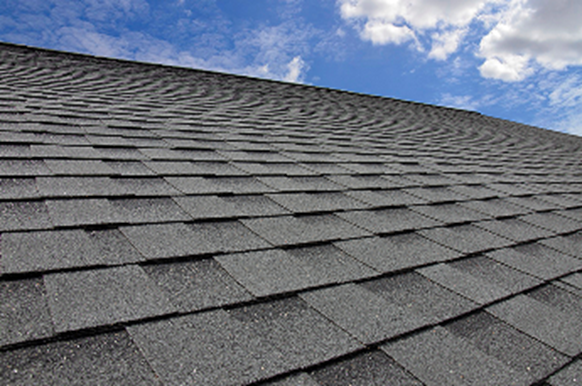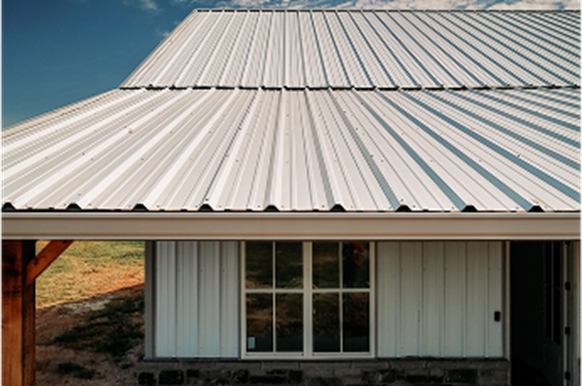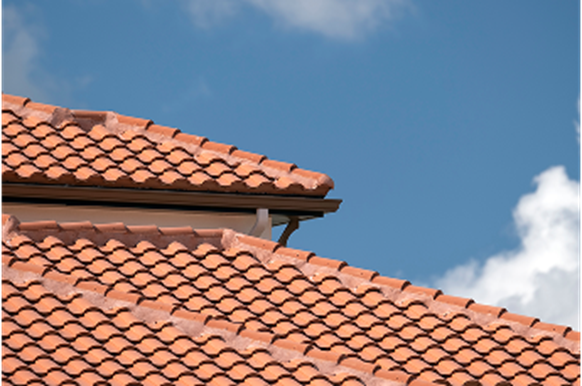Pros and Cons of Your Roof Type

Choosing the right material for your roof isn’t just about curb appeal; it’s about selecting an option that aligns with your home’s needs, budget, and location. Factors like durability and long-term maintenance costs can also play a key role in your decision. Certain roofing materials hold up differently against risks like wind, fire, and hail, which is why it’s important to understand your options to better protect your home.
Asphalt shingles

Pros
Asphalt shingle roofs are commonly known for being cost effective, reliable, and durable against most elements. They’re relatively quick and easy to install, which may help reduce the cost more. You can choose from a variety of styles and colors to better match the architecture of your home. Compared to heavier materials like tile or slate, asphalt shingles are lightweight and don’t put as much structural stress on your home.
Cons
While asphalt shingles have plenty of upsides, they also come with a few drawbacks. Their lifespan is shorter compared to other materials, typically lasting between 15-30 years, depending on quality and maintenance. They can be damaged easily by wind and other natural elements. Additionally, the color of asphalt shingles tends to fade over time due to sun exposure.
Metal roofing

Pros
Metal roofing materials have become increasingly popular due to their durability, light weight, and low maintenance. They can last anywhere from 40-70 years, depending on the quality, which is a significant appeal to homeowners. They’re known to be energy efficient, reflecting heat rather than absorbing it (that’s a plus for your utility bill). Another benefit is their superior resistance to fire. Today’s metal roofs are available in a wide range of colors, profiles, and finishes.
Cons
One of the most significant disadvantages of metal roofing materials is their cost, which can be up to three times higher than other materials. Installation requires specialized knowledge and precision, which can put a heavier strain on your budget. Without proper insulation, they can be quite noisy during rain showers. Certain metals are more prone to denting and can expand/contract with temperature changes, potentially causing panels to shift or loosen over time. Some finishes may fade, especially in hot climates. If repairs are needed years after installation, matching the exact finish or color can be challenging.
Tile roofing

Pros
Tile roofing materials—whether clay, concrete, or slate—are known to be among the longest-lasting roofing materials available. Tile is highly resistant to fire, rot, insects, and weather damage. It generally performs well in hot, dry climates and can handle intense sun exposure. This material has natural insulating properties that allow air to flow smoothly under the tiles, helping regulate indoor temperatures. When installed correctly, tile roofs typically require minimal upkeep. Their distinct, upscale look, along with their variety of textures and styles, can offer many appealing benefits for homeowners.
Cons
There are serious advantages to tile roofing, but it may not be the right fit for every home or budget. Materials like clay and slate require a substantial initial investment. Tile is very heavy and may require additional structural reinforcement before installation. Despite their durability, tile can be brittle and prone to cracking under heavy impact, which can make roof repairs, inspections, and chimney work quite the tricky task.
Wood shingles

Pros
Wood shingles (and wood shakes) have a classic, organic look that can add character to any home. They offer natural insulation and are usually lightweight, helping with energy efficiency and structural protection. When properly installed and taken care of, wood shingles can be surprisingly wind-resistant, making them a solid option for windy areas. Individual wood shingles or shakes can typically be easily replaced if damaged, without needing to repair an entire section of the roof.
Cons
Wood shingles have their charm, but they can also be high maintenance and costly. Frequent inspections and preservative treatments may be necessary to prevent issues like moss, mold, mildew, and rot. Since wood is a natural material, it’s prone to warping, cracking, and splitting in damp climates. It can also attract termites and other unwanted insects if not maintained properly. Unless treated with fire retardants, wood shingles are highly flammable, which can be a major issue in wooded areas. Their average lifespan of 20-30 years, combined with their advanced maintenance, may be a dealbreaker for some homeowners.
Have you recently replaced your roof?
A new roof can impact your home insurance coverage. Don’t wait to notify your insurance agent if you’ve recently made repairs or replacements.
Your roof is unique to your home and location
There’s no one-size-fits-all when it comes to your roof. The best roofing material for your home depends on several factors like climate, budget, and structure. Whether you’re dealing with intense heat or frequent storms, your roof needs to be up to the challenge. Opting for durable materials can help protect against damage and may increase your home’s value. No matter what kind of roof you have, regular maintenance is essential to avoid costly expenses and prevent insurance claims.
Understand your insurance coverage and deductibles
Your roof type can impact your home insurance, so it’s crucial to understand the details of your coverage, including limits, exclusions, and deductibles related to roof damage. Damage from different covered causes of loss may come with different deductibles or coverage limits. Understanding these nuances can help prevent surprise expenses when severe weather strikes.
Your roof shields your family—homeowners insurance from Alfa® can add peace of mind by covering your home and belongings, too. For more details on customized home insurance coverages, visit or call your local Alfa agent.
All coverages are subject to deductibles and policy limits. This is not an insurance policy. It is intended only to provide a general description of Alfa Insurance® and/or its product lines and services. An actual policy contains the specific details of the deductibles, coverages, conditions and exclusions. Your Alfa® agent can explain the policy and benefits and answer any questions you may have before you buy.